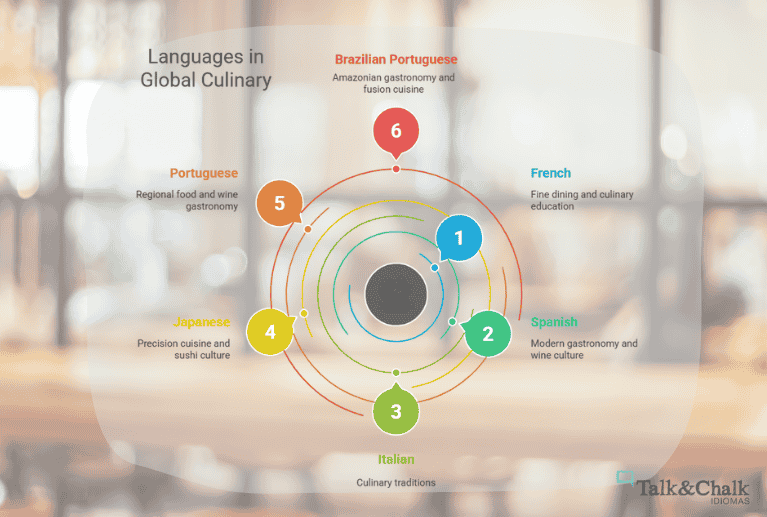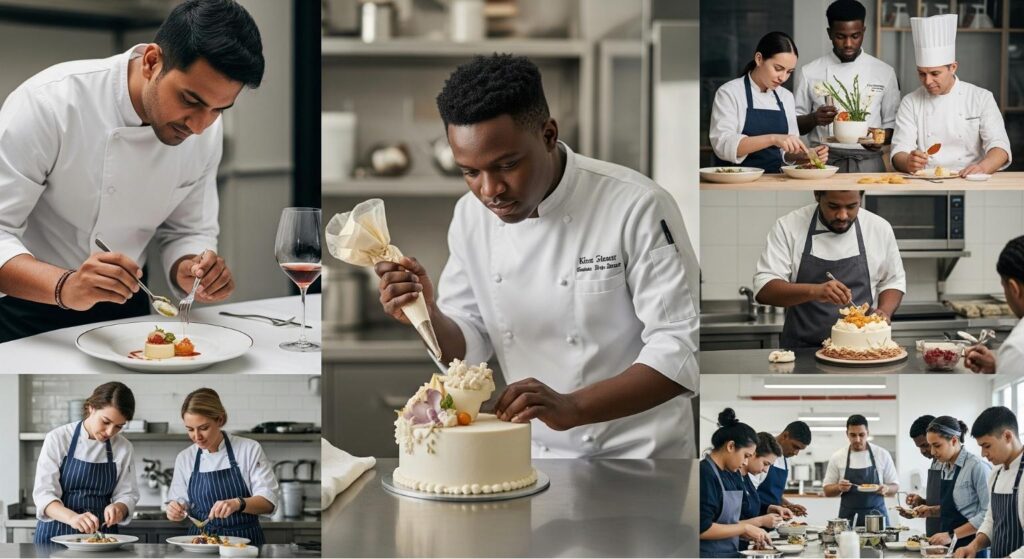From Michelin-starred kitchens to vibrant street markets, cuisine is a cultural expression — and language is the bridge to mastering its techniques, traditions, and innovation. Chefs, sommeliers, food critics, and culinary entrepreneurs benefit greatly from speaking the language of their culinary domain.
Here are six languages that dominate the global culinary scene:
French – The language of fine dining, haute cuisine, and professional culinary education (Le Cordon Bleu, Michelin).
Spanish – Essential for modern gastronomy, including Spain’s avant-garde chefs and Latin American culinary movements.
Italian – Known for its culinary heritage and regional traditions, from pasta to slow food philosophy.
Japanese – A symbol of precision, seasonality, and elegance through sushi, kaiseki, and disciplined kitchen culture.
Portuguese – Used in regional food and wine across Portugal and Lusophone Africa.
Brazilian Portuguese – Home to Amazonian ingredients, fusion cuisine, and a rising global presence in gastronomy.
🍽️ A language can be your secret ingredient in a culinary career, helping you train, explore, and share food culture on a global stage.


